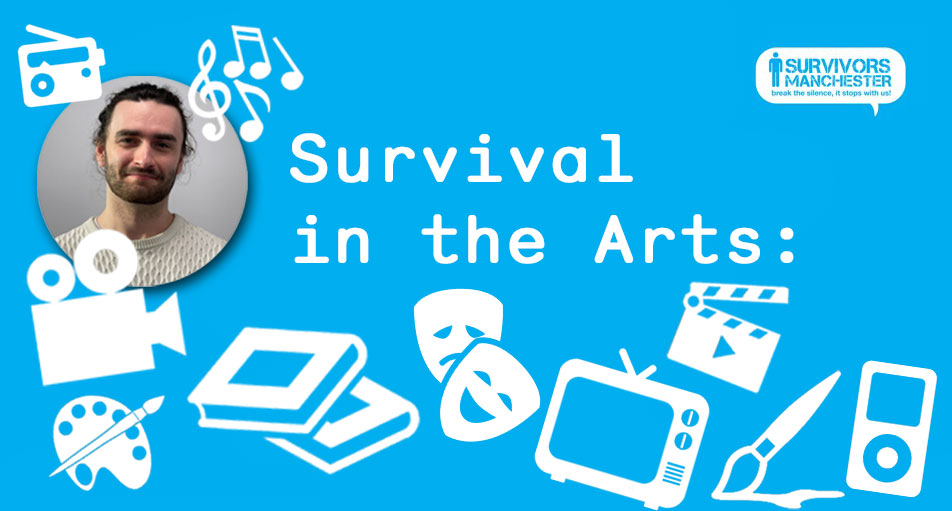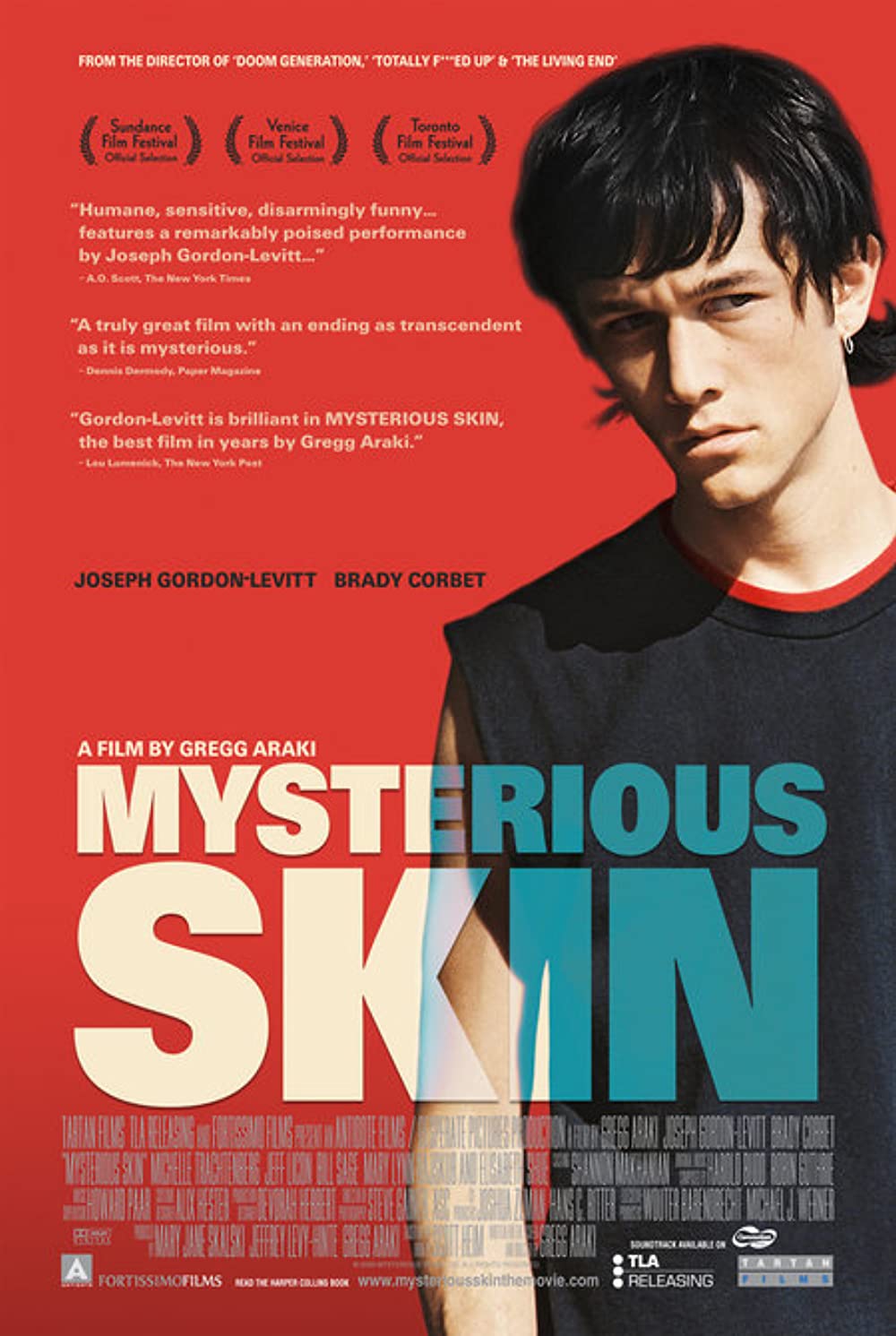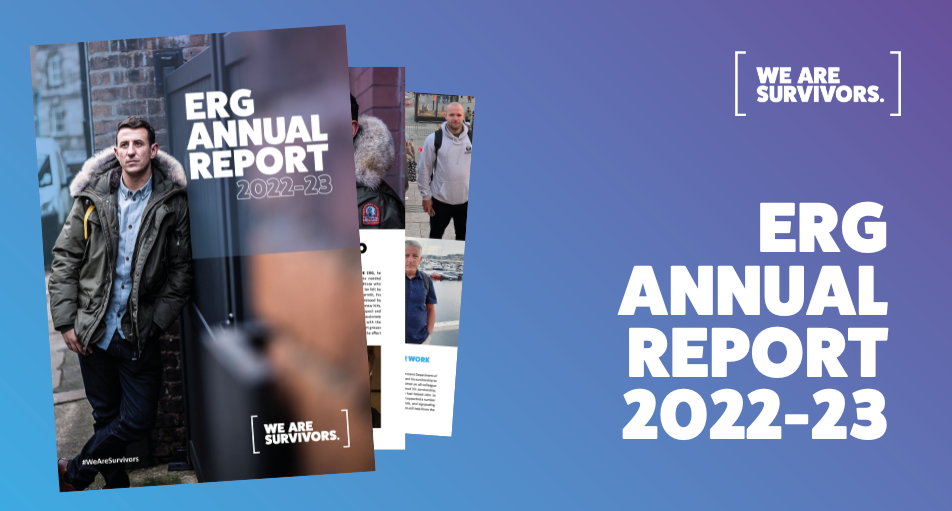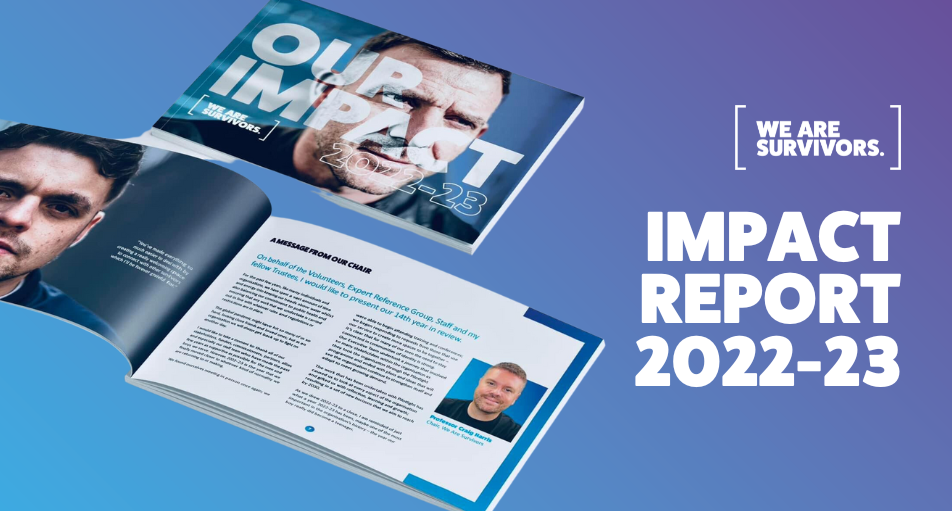Journal
Back
Arts Review: Mysterious Skin
Hello readers!
I’m Rory and I work here at We Are Survivors as the Admin Assistant to the OUT Spoken prison service, which delivers trauma-informed therapy services across the North West prison estate. I have the Thematic Lead within the organisation as the Research Lead and am the Commissioning Editor of this new part of our website, our monthly blog Survival in the Arts! and it is apt that we launch this today, as we come towards the end of Sexual Abuse and Sexual Violence Awareness Week.
I come from a creative academic background in philosophy and psychosocial studies and throughout these monthly artistic reviews, I will make at least one reference to a prominent philosopher per piece. I want to encourage our readers to seek these figures out so that they might forge the mental tools to navigate their own respective healing journeys as male survivors. Although, it won’t just be me you hear from, as i’ll be inviting guest writers from across our services to also be making critical artistic contributions.
I hope that you enjoy this new feature and drop us a line with any comments.
So as I kick off this section and as today’s contributing writer, I will be talking about Gregg Araki’s Mysterious Skin. Released in 2004, it serves as a filmic adaptation of Scott Heim’s 1995 book of the same name.
The story revolves around two protagonists and their distinct journeys towards remembering an event of sexual abuse. It has been received as an accurate portrayal of the extended effects of sexual abuse and rape on boys as they grow up and rediscover the truth of their trauma.
. . . . . . . . . . . . . . .
Mysterious Skin (2004)
 The prominent theme of this film, for me, is the question ‘what is the truth?’. The truth might be something that requires a sort of search or journey to find. Along the way we will find falsities; perhaps we will see these falsities for what they are, or we may be deceived by falsity disguised as the truth!
The prominent theme of this film, for me, is the question ‘what is the truth?’. The truth might be something that requires a sort of search or journey to find. Along the way we will find falsities; perhaps we will see these falsities for what they are, or we may be deceived by falsity disguised as the truth!
Nevertheless, what is false or falsity is not to be ignored or disavowed by definition. We make false assumptions everyday and throughout life, there is no way to ever know whether to turn left or right. Moreover, how do we know whether the (re)discovery of truth will be satisfying or fulfilling? It might itself become another doorway, to further sadness, happiness, or pathways of their own.
In short, both truth and falsity are one in the same the real journey of the survivor.
Araki invokes fantastic sounds and imagery for the journey of Brian, one of the film’s two protagonists. He believes that, as a child, he was abducted several times by memory-erasing UFOs.
In his search for evidence, he meets Avelyn, a girl who reports her own abductive experience as part of a UFO TV documentary. It is visually implied that Avelyn’s own experience was likely a blackout in response to witnessing her grandparents die in a car crash. Akin to Brian, her own trauma has been thoroughly wrapped in a blanket of fiction. Through her re-telling, she unconsciously enables Brian’s own hallucinations of abduction. Yet, the truth of the survivor’s journey sits at the core of this false enterprise all the while.
‘Everything stems from us being abducted’
‘You’re on your own way to discovering the truth. Think of yourself as a detective!’
We, the audience, are pressed to take Brian’s UFO abduction as reality through a particular flashback of his. The viewer must be left gob smacked in seeing an actual UFO appear, in CGI format, levitating above Brian’s childhood home, his sister and mother alongside!
Let this world-shaking visual speak to the power of childhood imagination, I implore. Further, its effect even on the retroactive adult eye. False fictions become semblant truths in the child’s mind, as these grand mystical ideas are clung to in a profoundly complex, adult controlled world. This is especially relevant to the young mind that attempts to rationalize an adult perpetrated sexual assault and/or rape. We can all understand how the potential of our childhood imagination forges memories of events that make us ask, as adults, ‘did that really happen?’
What we have in Brian is a mystery dominated waking world, and the lurking truth of sexual assault and rape behind it. Araki poses the UFO mystery, and detective work, as a falsity, that nonetheless carries truth in the brutal reality of its end: what happened that night with Coach and Neil.
Proceeding, then, to Neil’s story, he appears to be well acquainted with the reality of Coach’s actions, and what he did to Brian in contrast.
He is introduced to Coach at his first little league baseball practice. Coach quickly takes a particular liking to Neil, treating him as a favourite.
One moment, constituting the greater predatory escalation between the two, is when Coach encourages Neil to make rude noises into a microphone, and to pull faces for several photographs. The filmic framing and soundtrack tells the viewer that this is to be perceived as just another child’s game, its own fiction that hides a predatory truth. Araki insists thematising Neil’s experience of being groomed and abused by Coach as merely another in long line of games, filled with bright colours, sweets and video games.
Neil recollects the immediate effect of Coach’s eventual sexual abuse on him in the following line, as he looks to the ground, scattered with colourful breakfast cereals, snacks, and sweets.
‘I looked to the floor, it looked like a kaleidoscope had shattered’
Manifesting as something that was once shiny and glass-like, Neil’s life has become shattered by the greater traumatic power of real sexual abuse and rape.
The truth of what Coach wanted from Neil shattered something colourful within him. He becomes split.
As a teenage underage sex-worker, he continues to recall this event with his abuser, which further stimulates his encounters with ‘clients’. A split-second visual flash of showering sweets (what happened on that day) propels Neil to reach climax during one paedophilic encounter. The return of the truth, that otherwise lurks, incurs him to seek out to replicate this encounter again, even it means continuing to sell his body to dangerous paedophiles.
Neil sells himself in New York, where he is endangered by two significant clients. One man is dying from aids, his entire body equally blotched by scabs and sores. Luckily, Neil is not requested to make any form of penetration or vice versa. Another man forces Neil to take cocaine, proceeding to physically assault him. Overwhelmed by the event, Neil hides in the bathroom, only for the assaulter to break in, beat him over the head, and rape him. He is left injured, lying, and barely conscious outside an apartment complex.
Neil’s experience is a peculiar inverse of Brian’s. Where Brian unconsciously indulges in falsity to satisfy his search for the truth, Neil is conscious of the falsity of trying to satisfy his return to the truth. In other words, Neil is aware of the shattering power of assault, but he resumes his search to know more via repetition. It must be understood, by the audience, however, that Neil’s pathway is fraught with threatening peoples and things, both physical and mental.
Despite his familiarity with abuse and rape, Neil is as much a pathfinder as Brian. His own pursuit of the truth lies in investigating the split emotions he felt at the time of abuse. Neil’s journey lies in the experimental replication of the sexual encounter, never minding their potential to injure and kill. His concern lies in the growing physical and temporal distance between himself and Coach.
Plato would talk about ‘Anamnesis’ across his published dialogues; the idea that truth is not necessarily ‘learned’ but ‘(re)discovered’. In the journey of the survivor, one might describe their desire to remember their abuser/abuse, as opposed to learn about them/it. We, the audience, can really feel this tension between learning and remembrance in Brian’s journey. We know that his pathfinding via false learning will inevitably lead him to remembering the truth. Neil, as indicated, is a bit more complicated, as he is less concerned with learning (about AIDS and the dangers of sex work) and more of remembering the ever-disappearing true event with Coach.
Regardless of their separate personalities and journeys, Brian and Neil unite to (re)discover the truth. Both hallucinatory and material experiences, false and true memories, become the realities of these two survivors. Crucially, it is their coming together to share in the weight of the real world that allows for revelation. Nonetheless, this coming together comes as an insurmountable emotional task, not just in light of the nature of sexual abuse and rape, but in the clashing of world views, composed of different pathfinders plotting their own routes towards the truth.


